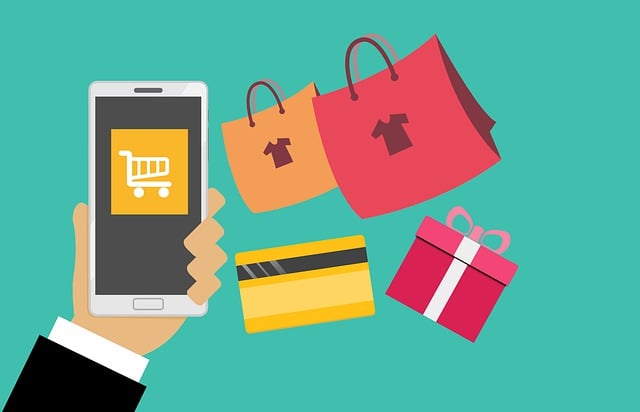
M-Commerce: A New Sector With Great Possibilities
M-commerce, or mobile commerce, is a rapidly growing sector. It comes with significant possibilities for existing and upcoming businesses and consumers alike.
As smartphones become more prevalent and internet connectivity improves, more people use their mobile devices for shopping and transactions.
This article explores how m-commerce is gaining popularity and its impact on the sales and marketing worlds. It also highlights the potential side effects and the growing role of cybersecurity in the future.
Table of Content
The Rise of M-Commerce and How It Is Different From E-commerce
According to Statista, the world of m-commerce sales reached $2.2 trillion in 2023. This is a remarkable growth from 2018 when m-commerce sales accounted for only $982 billion. It can be attributed to the easy access that mobile devices offer users. They can access the internet from home, work, or while traveling and shop online anytime, anywhere.
Mobile apps and optimized websites offer seamless browsing and purchasing experiences. Mobile payment solutions and digital wallets have made transactions more convenient and secure. M-commerce has an advantage over e-commerce due to its simplified online payment methods.
This is not just because of digital wallets but also due to biometric verification. In e-commerce, users must input their card details or authenticate any sale through OTPs (one-time passwords). Apart from this, they need access to a laptop or computer. In m-commerce, on the other hand, you only need your smartphone or tablet. These devices are far more easily accessible and portable. There are also many other advantages to m-commerce that drive its growth.
What Is Driving the M-commerce Growth
M-commerce is reshaping the sales and marketing landscape. Many retailers invest in mobile optimization and app development. Mobile-specific marketing strategies, such as push
notifications, location-based targeting, and personalized recommendations, help businesses engage with customers in real-time and drive sales.
Social media platforms, such as Instagram, have become popular shopping destinations. Influencers and brands leverage their reach to promote products and ease sales. According to TechRound, the m-commerce industry is expected to reach $4.5 trillion in sales by 2024. This will account for over 70% of retail e-commerce sales.
Several technological advancements will also help drive m-commerce sales to unprecedented growth. For example, the use of augmented reality and virtual reality (AR & VR). They will ensure a more immersive and interactive experience for m-commerce consumers.
AR will allow shoppers to visualize products from the comfort of their homes or outdoors. At the same time, VR can help consumers try different products in the virtual world.
These innovations will encourage customer engagement and drive sales. Especially in the tourism and beauty industries. Yet, these technological innovations can be coupled with others, such as AI, to:
- Advance further personalized product recommendations
- Create better marketing campaigns and pricing strategies
- Improve experience and other features
Specialized m-commerce apps can offer customers an even more tailored shopping experience. Amazon, Spotify, and eBay already use such apps. They take into account customers’ past purchases, interests, or locations. For example, if you use other Amazon Prime services, all your information can be analyzed to tailor your shopping needs.
Another driving factor behind the m-commerce growth is its safer mobile payments. Contactless transactions and encrypted payments make purchases much quicker than on e-commerce sites.
Disadvantages of M-Ecommerce You Should Consider
Despite its many advantages, m-commerce has its challenges and risks. For example, user shopping data can be used against us in various ways. This can include:
- Encouraging impulsive buying behavior, leading to buyer’s remorse
- Other psychological issues, such as the need for instant gratification
In many ways, mobile and online payments come with a cost to our privacy, and they also affect the local market. Another significant concern in the rise of online shopping is phishing scams targeting mobile users.
Cybercriminals exploit the popularity of m-commerce platforms. This includes social media accounts. They use it to deceive users into providing sensitive information. Fraudulent purchases are also common. These scams can result in financial loss, identity theft, or personal data being compromised.
To help mitigate these issues, avoid overreliance on online transactions. Spend wise and consider boosting your online cybersecurity by:
Using a VPN
When you use a VPN, you gain access to several benefits related to m-commerce. A VPN encrypts and protects your data 24/7. It prevents hackers from accessing your personal information, including credit card details and login credentials.
VPN software will mask your IP address so that scammers and advertisers won’t be able to track your online activities. This will reduce the chances of becoming a target for phishing attacks or personalized scams.
Mobile commerce platforms use region-specific restrictions. In some instances, there is a limited availability of particular products or deals. You can use a VPN to change your location and bypass these geo-limitations. This will enable you to get a broader range of products or better pricing options.
We often rely on public Wi-Fi to make purchases with our smartphones. However, this also makes us more vulnerable to cyberattacks as these public Wi-Fi connections are unsecured. With a VPN, you can keep your mobile device and data safe even while using public Wi-Fi. Use a VPN to regain your online privacy and enjoy m-commerce in an intelligent and profitable way.


